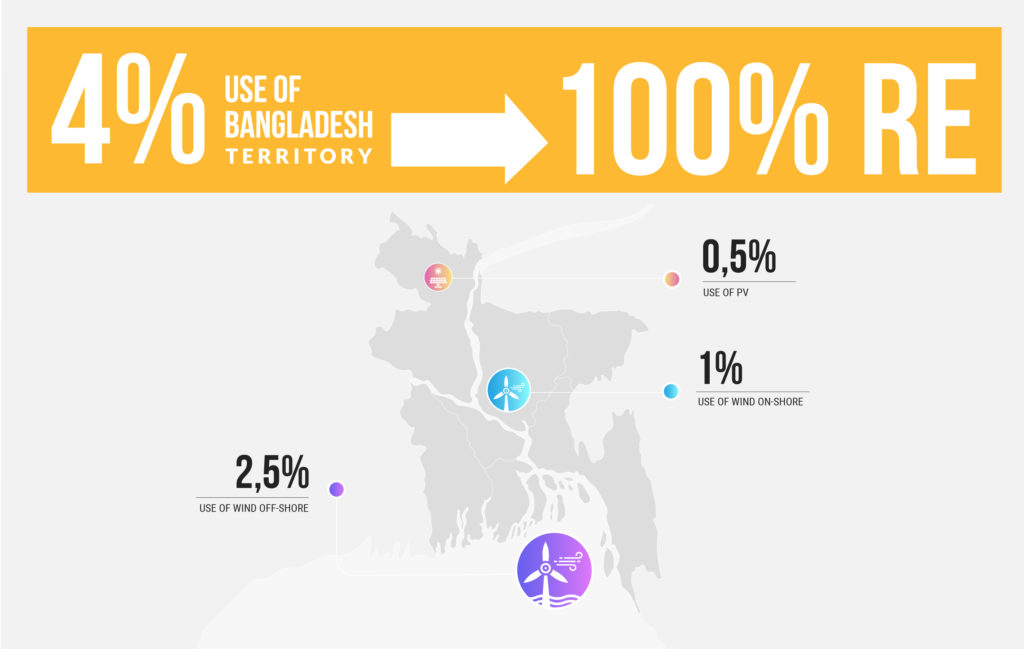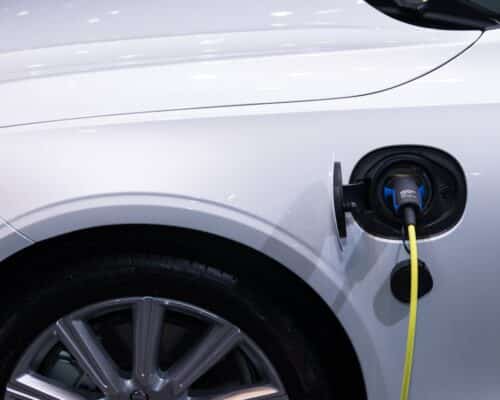Renewable Energy in Bangladesh – Current Trends and Future Opportunities
Photo by Sazzad Bin Jafor
09 June 2024 – by Viktor Tachev Comments (0)
Renewable energy in Bangladesh is a sector with vast room for growth. As of 2024, Bangladesh relies mainly on natural gas. Oil and biofuels dominate the rest of the energy mix. However, with its economy booming, Bangladesh is now looking for sustainable and more affordable alternatives to help it accommodate the soaring energy demand. In light of the country’s recent
climate change struggles, the focus is no longer on fossil fuels but on green energy.
Renewable Energy in Bangladesh 2024
In 1980, only 0.016% of Bangladeshis had electricity. Fast-forward 40 years and the figure has rocketed up to 92%. Only a few years ago, Bangladesh sat with countries like Mongolia in finding themselves with electrification levels below 90%.
Bangladesh’s renewable energy policy journey began in 2008, when the Ministry of Power, Energy and Mineral Resources published their policy guidelines. Since then, up until 2022, the sustainable energy niche in Bangladesh has been making sluggish progress. However, the development of renewable energy projects is slowly starting to take off.
As of 2024, the clean energy capacity in Bangladesh is 1,200 MW. In the country’s total energy mix, this accounts for a renewable energy percentage of around 2%. Solar is responsible for the lion’s share of current renewable energy capacity, with 968 MW. The country generates less than 1% of its electricity from hydropower. These levels are far below the 13% global average.
While the country has great prospects for accelerating renewable energy deployment, current targets remain weak. Bangladesh’s Integrated Energy and Power Master Plan from 2023 targets 18% clean energy by 2030 and 40% by 2041. This might seem like a notable leap from the current levels. However, there is a caveat. Just 5.7 of the 18% clean energy target by 2030 will be renewable. This will increase to 8.8 of the 40% by 2040. The rest will come from questionable technologies like CCS, ammonia, and hydrogen, which, although fossil fuels by nature, are included in the clean energy targets set by the government.
This will further lock-in Bangladesh in the major fossil fuel problem it suffers from today. In 2023, the share of fossil fuels stood at 98%, with natural gas accounting for most of it.
Bangladesh’s Renewable Energy Potential
Bangladesh’s National Solar Energy Action Plan introduced plans to shift its renewable energy policy. This aims for up to 40 giga-watts (GW) to be installed by 2041. This was accompanied by medium roll-our of 25 GW and a business as usual outcome of 8 GW.
Consequently, its 40 GW target may prove challenging to achieve based on renewable energy capacity in Bangladesh. The latest figures show that renewable energy only makes up 2% of the national energy mix. However, if successful, it will be made up of the following:
- 16 GW – solar hubs
- 4 GW – electric utilities
- 5 GW – private developers
- 2.5 GW – irrigation pumps
- 12 GW – rooftop installations
The potential for a swift transition and a diversified renewable energy mix is there. For example, utilising only 1% of the Kaptai dam’s water surface for floating solar would see nearly 500 MW of solar capacity. Additionally, unexplored potential for land can be found along riverbanks and reclaiming areas in the Megha estuary.
Furthermore, according to the National Renewable Energy Laboratory (NREL), there is over 20,000 km2 of land where wind speeds range between 5.75 and 7.75 m/s. This equals to a potential of over 30,000 MW.

Bangladesh’s Government’s Efforts to Help the Renewable Energy Sources Transition
The government of Bangladesh announced plans to install rooftop systems on all educational facilities to feed additional solar power to the grid. It also plans to replace fossil fuel transport with more electric vehicles. And in 2021, the country accepted the Electric Vehicle Registration and Operation Guidelines, originally proposed in 2018. As a result, the construction of solar charging stations for EVs with an average capacity of 20 kilowatts is planned.
For now, although distant, the future looks bright. REN21’s report concluded that Bangladesh, alongside China, India, and Japan, are leading renewable energy developments in Asia. To illustrate this positive push, Dandan Chen from the World Bank, stated that Bangladesh has one of the most successful off-grid renewable energy programmes globally.
Ultimately, the renewable energy transition in Bangladesh will be fuelled by government policy and institutional capacity. For example, the Solar Home System Programme by IDCOL provides funding and technical know-how to private companies and consumers within the renewable energy niche. Initiatives, as such, resulted in Bangladesh now hosting the largest domestic solar power programme globally. It covers 11% of the population.
Challenges for the Renewable Energy Sources in Bangladesh
Bangladesh is among the worst-affected countries from climate change. Several studies point to risk facing coastal land and territories bordering riverbanks subject to constant erosion and flooding. These challenges are forcing people to relocate and complicates renewable energy network development and policy.
To make a quick turnaround in the national power system, Bangladesh has to solve several additional challenges. There is also a lack of incentives for private investors including: missing coordination among ministries, procedure difficulties, limited budget allocation to the RERs-based projects, slow technological adoption, lack of awareness and application of green building policies, lack of grid infrastructure with enhanced demand and capacity.
Crucially, even with the authorities’ best efforts, the entire area of Bangladesh cannot be electrified. The UN projects about 10% of it to remain off the grid. This has led to innovation from not-for-profit groups such as Grameen Shakti to sustain electricity production and supply renewable energy technologies in rural areas.
The Advantages of the Renewable Energy Transition
The transition towards the renewable energy sector will further accelerate economic development, keep energy access reliable and affordable and improve healthcare and quality of life.
A key enabler for Bangladesh’s renewables transition is the support from global organisations. Since the country’s independence, the World Bank has provided over USD $30 billion in grants and interest-free credits. Furthermore, Bangladesh has been taking advantage of interest-free credits to fund its renewable energy projects.
Another success story is the partnership between the World Future Council, the local Coastal Development Partnership organisation, and the German development organisation, Bread for the World. In 2018, it kicked-off the “100% Renewable Energy for Bangladesh – Access to renewable energy for all within one generation” project.
There are also long-lasting and ongoing initiatives with partnering organisations like REEP. Their goal is to help promote the renewable energy transition within Bangladesh.

How Green Energy Transition Affects the Coal Industry in Bangladesh
Bangladesh has seen a 33% annual rise in coal consumption since 1990. By the end of 2021, it planned to ensure coal-based power plants with the capacity to produce 7.5 GW of electricity. This is nearly 50% of what was in place in 2017. In 2023, the country nearly tripled its coal-fired power output.
However, even then, Bangladesh doesn’t plan to be as dependent on coal as other countries in Asia and will continue to rely predominantly on natural gas. Consequently, the renewable energy transition will not have such a drastic impact on the coal industry in the short-term. Yet, if long-term forecasts and Bangladesh’s renewable energy ambitions are reached, by 2050, coals share in its energy mix would be negligible.
Looking Ahead
Bangladesh’s reliance on natural gas has already proved costly – both financially and in terms of energy security. The country has been priced out of the global energy markets due to the soaring prices of gas in 2022, facing fiscal struggles and extended blackouts that are likely to last for years to come.

by Viktor Tachev
Viktor has years of experience in financial markets and energy finance, working as a marketing consultant and content creator for leading institutions, NGOs, and tech startups. He is a regular contributor to knowledge hubs and magazines, tackling the latest trends in sustainability and green energy.
Read more








